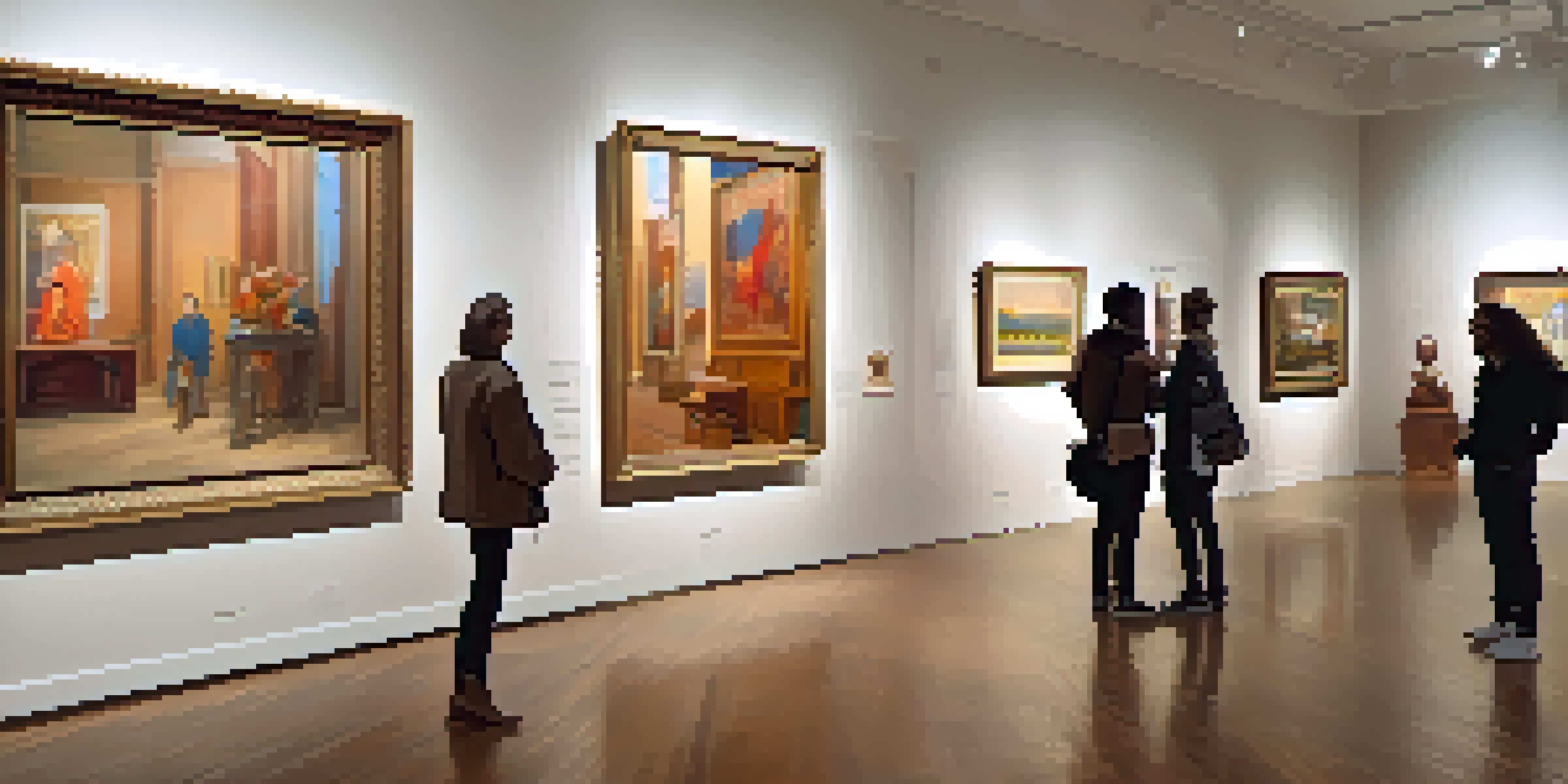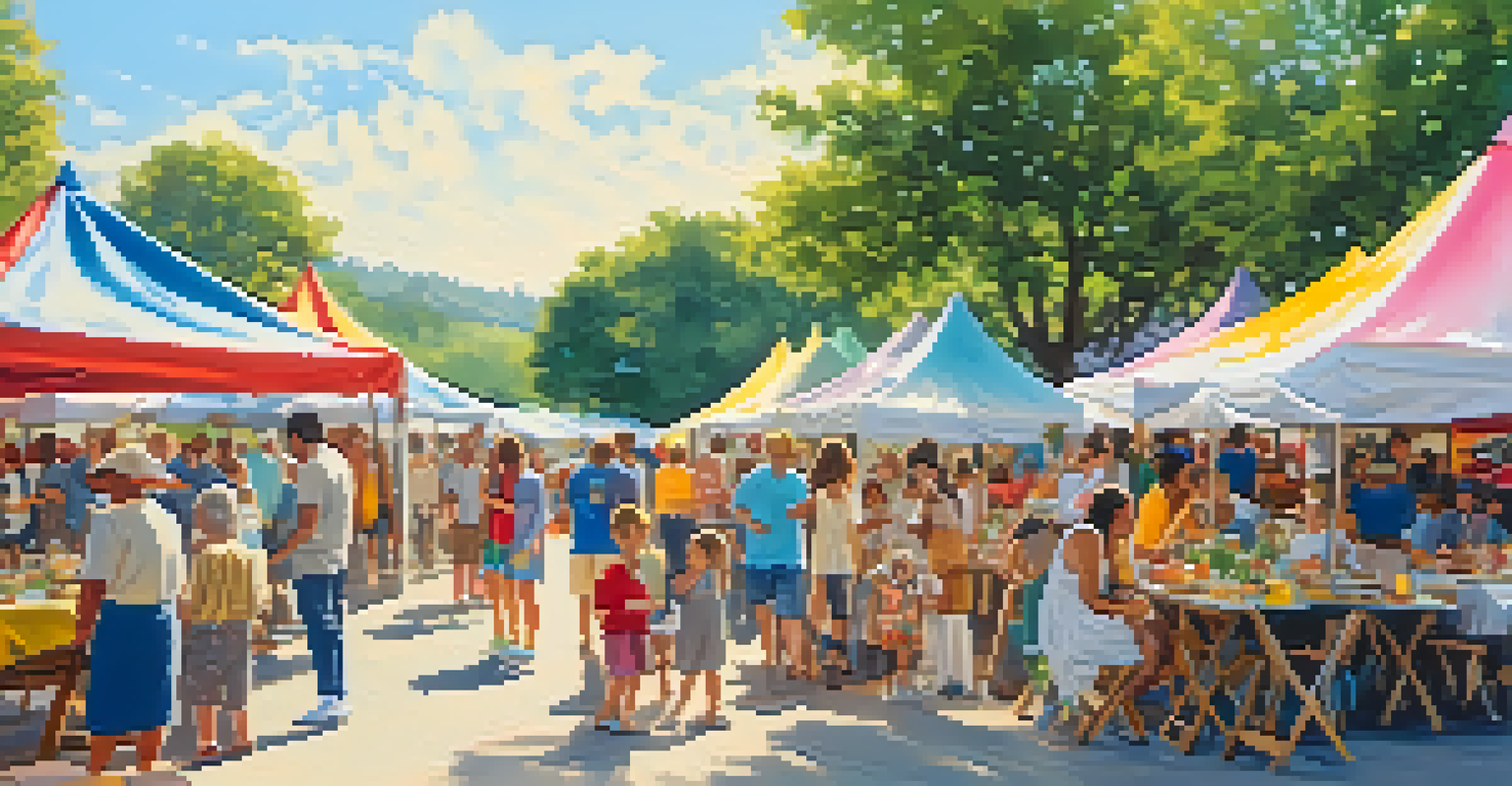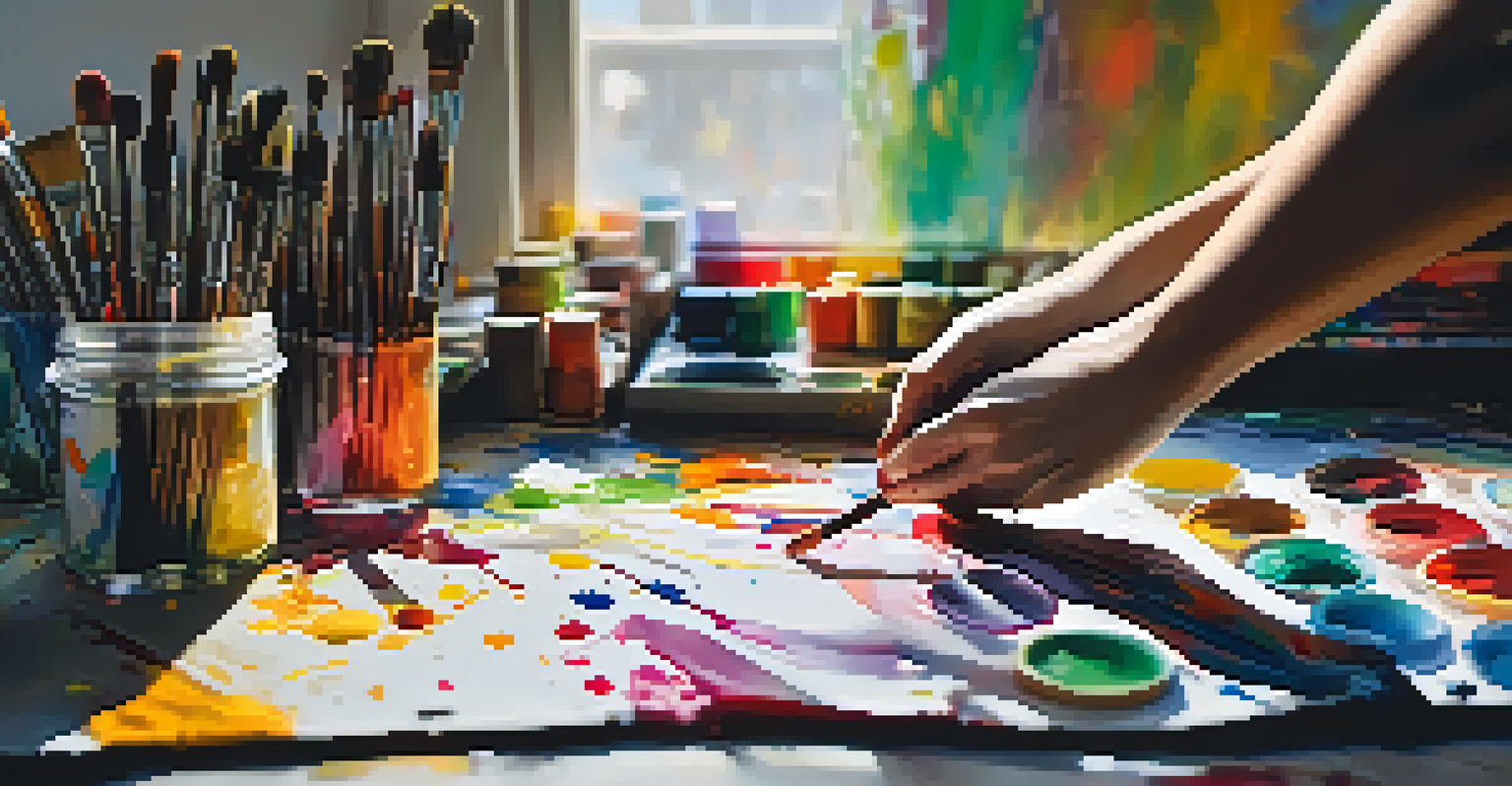Art Collecting and Philanthropy: A Growing Trend

Understanding the Intersection of Art and Philanthropy
Art collecting has long been a passion for many, but an emerging trend is blending this passion with philanthropy. Collectors are increasingly recognizing the impact their collections can have on communities and cultural preservation. By donating art, they not only enhance cultural institutions but also help to foster a greater appreciation for the arts.
Art is not a thing; it is a way.
This intersection of art and philanthropy has opened new avenues for collectors to make a difference. Instead of simply acquiring art for personal enjoyment, many are looking at how their collections can serve a broader purpose. It's about leaving a legacy that resonates beyond the walls of their homes.
Moreover, this trend encourages a sense of responsibility among collectors to support artists and art organizations. By investing in the arts through philanthropy, they contribute to the vibrancy of the cultural landscape, ensuring that future generations can enjoy and learn from these works.
The Role of Art Museums in Philanthropic Efforts
Art museums play a pivotal role in bridging the gap between art collecting and philanthropy. Many museums actively seek partnerships with collectors who are willing to donate or lend pieces from their collections. This collaboration not only enriches the museum’s offerings but also provides collectors with an avenue to share their passion with the public.

Additionally, museums often create initiatives that recognize collectors for their contributions. This acknowledgment can inspire others in the art community to consider philanthropy as a viable option for their collections. It's a win-win situation: collectors gain prestige, while museums enhance their cultural significance.
Art Collecting Meets Philanthropy
Collectors are increasingly blending their passion for art with philanthropy, enhancing cultural preservation and community engagement.
Through exhibitions and educational programs, museums can showcase donated works, allowing broader audiences to engage with the art. This process not only elevates the collector's legacy but also fosters a deeper connection between the community and the arts.
Emerging Trends in Art Collecting for Philanthropy
Recently, new trends have emerged within the art collecting community that emphasize philanthropy. For instance, collectors are increasingly focusing on socially conscious art, which reflects pressing societal issues. This shift allows them to support artists whose work speaks to themes of social justice, sustainability, and community empowerment.
Philanthropy is not about the money. It’s about using whatever resources you have at your fingertips and applying them to create a better world.
Moreover, the rise of digital art and NFTs (non-fungible tokens) has opened up fresh opportunities for philanthropic giving. Collectors are now able to use blockchain technology to support artists directly, ensuring that proceeds from sales contribute to meaningful causes. This innovative approach to art collecting aligns well with the principles of philanthropy.
As more collectors embrace these trends, the art world is becoming a platform for dialogue and change. By choosing to support artists and initiatives that reflect their values, collectors can wield their influence for a greater good, showcasing how art can be a powerful tool for social impact.
Benefits of Combining Art Collecting and Philanthropy
Combining art collecting with philanthropy offers a multitude of benefits for both collectors and communities. For collectors, it provides an opportunity to give back while enriching their personal collections. This dual purpose can lead to greater satisfaction and fulfillment, knowing that their passion supports a meaningful cause.
Communities also reap the rewards of this union, as donations can lead to increased access to art and cultural programs. Philanthropic efforts help fund educational initiatives, artist residencies, and community engagement projects. In turn, this fosters a vibrant cultural scene that benefits everyone.
Museums Foster Donor Collaborations
Art museums actively partner with collectors to showcase donations, enriching their offerings and inspiring further philanthropic efforts.
Additionally, engaging in philanthropy can enhance a collector's reputation within the art world. By aligning themselves with charitable efforts, collectors can build valuable relationships with artists, curators, and fellow patrons, creating a supportive network that strengthens the arts community.
How to Get Started with Art Philanthropy
For those interested in merging their passion for art with philanthropy, the first step is to identify personal values and causes that resonate. Whether it's supporting local artists or funding educational programs, understanding what matters most can guide your efforts. This alignment ensures that your contributions will be impactful and fulfilling.
Next, consider connecting with local art organizations or museums that align with your philanthropic goals. These institutions often have programs designed to facilitate donations and can provide guidance on how best to contribute. Collaborating with established entities can amplify your impact.
Finally, don’t hesitate to leverage your network. Discussing your philanthropic goals with fellow collectors and artists can lead to exciting opportunities for collaboration and support. By sharing your passion, you can inspire others to join you on this meaningful journey.
Case Studies of Successful Art Philanthropy
Several high-profile collectors have successfully combined their passion for art with philanthropic endeavors, setting inspiring examples for others. Take, for instance, the example of a prominent collector who donated a significant portion of their collection to a local museum. This act not only enriched the museum's offerings but also fostered community engagement through educational workshops and exhibitions.
Another notable case involves a collector who established a foundation dedicated to supporting emerging artists. By providing grants and scholarships, this foundation has helped countless artists gain recognition and the resources needed to thrive. Such initiatives highlight the potential for impact that art philanthropy can have on the creative community.
New Trends in Art for Good
Emerging trends like socially conscious art and digital NFTs are transforming art collecting into a platform for social impact and change.
These case studies demonstrate that art philanthropy is not just a trend but a powerful movement that can lead to lasting change. By sharing these success stories, we can encourage more collectors to consider how their passion for art can contribute to a greater good.
Future Outlook of Art Collecting and Philanthropy
The future of art collecting and philanthropy looks promising, with an increasing number of collectors recognizing the importance of giving back. As societal values shift toward sustainability and social responsibility, we can expect to see more collectors supporting causes that reflect these principles. This evolution will likely lead to a more diverse range of artworks being celebrated and preserved.
Moreover, advancements in technology, particularly in the realm of digital art, will continue to reshape the landscape. With the rise of NFTs and online platforms, collectors can engage with artists and communities globally, creating a more interconnected art world. This accessibility will enhance opportunities for philanthropic giving across various demographics.

As we move forward, it's essential for collectors to embrace this growing trend. By actively participating in art philanthropy, they can help cultivate a vibrant cultural future, ensuring that art remains a vital part of our shared human experience.